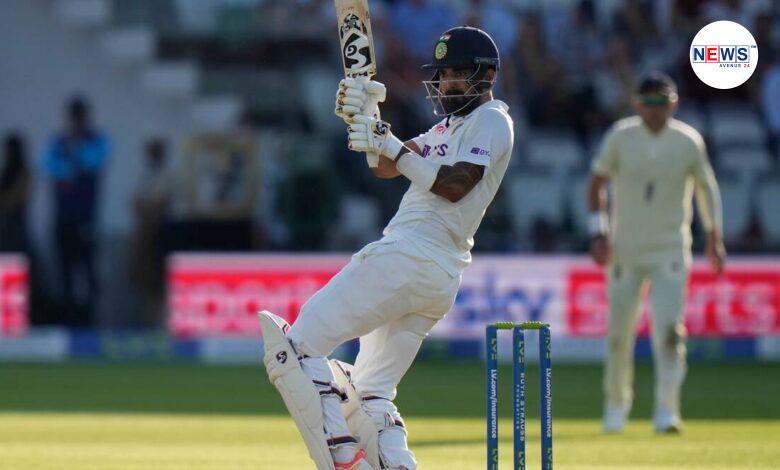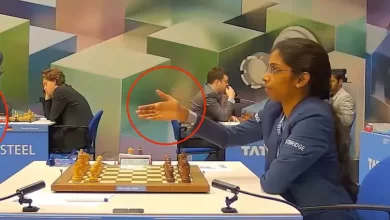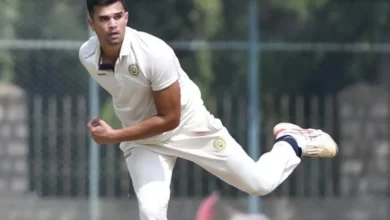
KL Rahul’s coach Samuel Jayaraj explains the mental transformation and hours of sweat in honing the technical tweaks that helped the 29-year-old batsman sparkle in the Tests in England.
Watching his ward KL Rahul repel James Anderson and chums in Trent Bridge and Lord’s rolled back the years for his coach Samuel Jayaraj. “It’s the same way he used to bat when he was 16-17. His batting was so full of joy.” More than the runs he has put on board, or the finesse of his technique, it’s the “joy in his batting” that the coach always looks out for in his student. It’s a trait especially savoured because of the context. “It (when he was out of the team) was the most negative or useless I have been ever in my life. There was a lot of fake sympathy thrown at me,” Rahul had said in a Red Bull show. “I didn’t know when I would be playing for my country again, will I get back my position?”
By joy, the coach means he is batting with a “free and clear mind”. Of all the virtues that have shone on Rahul, it’s the clarity of mind that has dazzled the brightest.
When those around him have struggled to decide which ball to leave and which not to, or which stroke to play and which not to, or which bowler to take on and which not to, or when to bide time and when to counter-punch, Rahul has mostly batted like a pre-programmed batting machine, his responses to every situation precise and definite, his body language calm and collected. “There is no confusion in his head,” he says.
In the past, by his own admission, Rahul has at times looked confused. The confusion that stemmed from too many choices. “I felt that I could play two or three different shots for every given ball even in red-ball cricket,” Rahul explained his failing to Dinesh Karthik in a post-day interview. The confusion that derived from a shortage of runs. Between his last two hundreds, Oval 2018 and Lord’s 2021, he had gone 14 innings without a hundred and just one half-century. The confusion that popped up from self-doubts.
The remedy was simple. “Mind performance,” his coach says. A high-note synchronisation of mind and muscle. “Beyond a stage, especially at the level in which he plays, it’s more about the mind than technique. So mind performance was the chief point we discussed in our conversations, how to train your mind to perform in a situation, how to reach that stage when you are doing everything in the perfect way. If you have control over your mind, you can have control over your shots,” he says.
Rahul has a whole range of strokes, from classical to post-modern. But since he was playing one shot too many, he had less control over his shots. “I realised I had to learn to control sometimes when the going gets tough or when the wickets are challenging, or playing against good bowlers when the ball is swinging, you need to hold back some of the shots. Those were the things I tried to work on or those were the learnings from when I was failing in Test cricket,” he explained to Sky Sports.
Mind performance kicked in again. It began with a conscious effort to leave more deliveries outside the off-stump, especially early in the innings. It’s instinctive for batsmen, especially for stroke-makers like Rahul, to feel bat on every ball. But with the ball seaming and swinging late in England, it was a self-destructive tendency. Worse was the dilemma to leave or not to leave, one that afflicted him in the previous tour to England. Leave is perhaps a shot (or no-shot) that requires the application of mind than any other shot.
He hit the training ground running, and it’s where Jayaraj sensed Rahul has rediscovered his joy in batting. “He would just practice, practice, practice, hundreds and thousands of balls a day. He was like that 16-17-year-old boy again, the guy who ate, drank and slept cricket,” he says, before adding: “Wait, he even snacked cricket.”
The difference was there to be seen. As much as the shots he played, it was about the shots that he abstained from in this series. He curbed his expansive drives, the audacious flicks, the on-the-rise square drives, the unnecessary pokes and stabs outside the off-stump. Discipline and judgement were the catchwords. For instance, en route to the Lord’s hundred, he barely played a stroke in the first session. At one stage, he was just 18 off 95 balls.
Discipline is a difficult but contagious virtue. Once a facet of the game is disciplined, it flows to other aspects of the game too. So even if he is deeply entrenched at the crease, he doesn’t look to attack needlessly. The result: In 10 innings in the 2018 tour, he faced 450 deliveries. In four innings alone, he has soaked 388 balls. The coach, though points out: “Like in his younger days, a very patient batsman.”
Throughout his career, Rahul has been prone to altering his stance, back-lift and trigger movements. At the start of his career, he used to press forward in his trigger movement, but in England in 2018, after being hounded by out-swingers, brought about by his penchant to drive anything half-volleyish, he began to move back and across more prominently. It made him susceptible to the nip-backers. In the same duration, he experimented with the pick-up point of his bat. In the incipient years, the bat used to face the first slip, but in his second tour to Australia, the bat used to come down from the line of the off-stump. As his troubles continued, he began to hold it over the middle-stump, maybe a move to ensure that he was not getting far too across.
In England, and before that in the Ranji Trophy, he has reduced his trigger movement. He has fractionally opened up his stance, the back foot is slightly across, and the front foot does not move too far across. At the finishing point of the trigger movement—before he commits to either foot depending on the length—both feet are more or less parallel to each other. The reduced trigger movement gave him more balance; his head doesn’t fall over. It allowed the bat to come through a straight line, and he isn’t forced to play around his front pad.
He elaborated the change to Karthik: “I have tried to keep my initial movement as small as possible and try and do it at the right point so that I am ready before the ball is delivered. That’s something that I really practised very hard at in the training sessions and nets. It is to get into the ready position at a precise time, you don’t want to do it too early or late on it.”
He changes his trigger movement according to the pitch too. In Trent Bridge, he moved less across than he had at Lord’s because there was extra bounce and he was looking to play beside the line of the ball. Lord’s was slower and less bouncy, so he was looking to get behind the line more often, and hence moving a wee bit more across.
Jayaraj does not dwell on the technical aspects of the game they had worked together. “Do you want the whole world to know about the changes he had made? I can’t tell you,” he says bluntly before he emphasises again: “I just look for one thing in his batting.” Whether there is joy in his batting.
News Source: Indian Express





